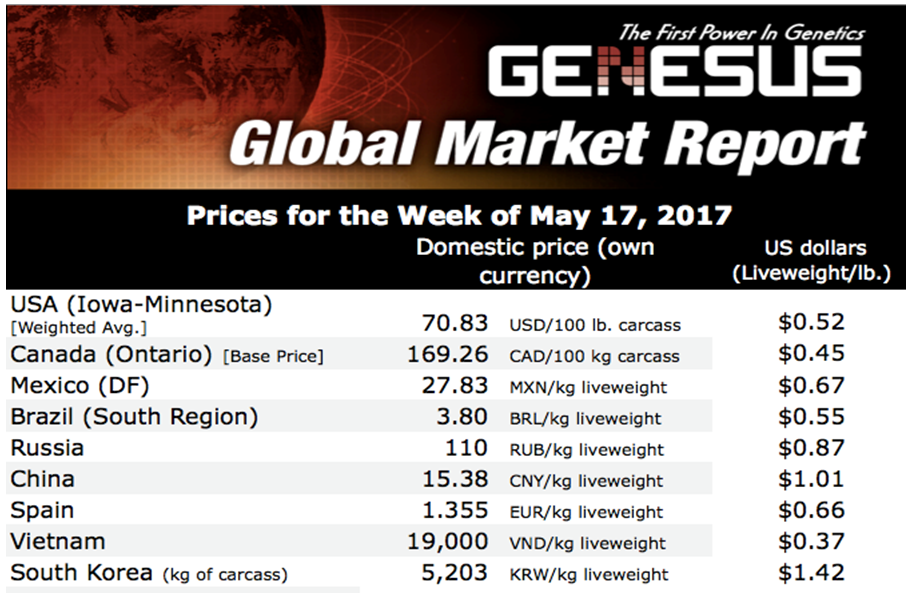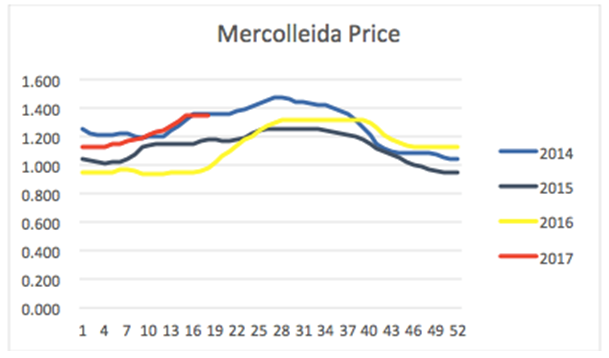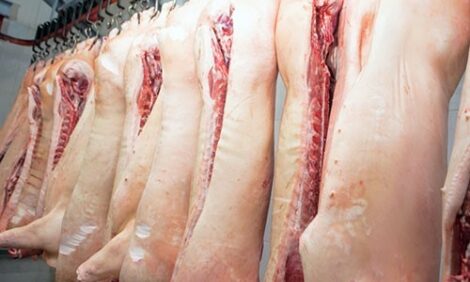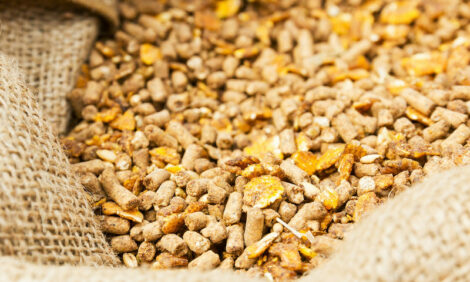



Global Market Report – EU and Spain Mercedes Vega
Between supply and demand in Spain a balance has been struck, although punctual, after a month of repeating the prices of live hogs.
However, production has not increased. This has caused the weight of slaughter to be falling until Easter. After this by the days of activity lost during that week and May 1, the weight has been more or less stabilized.
On the other hand, the piglet market, after these months when prices were rising reaching maximum values that nobody could believe, but were sold and bought, € 56.50 piglet of 44 pounds, seems to be stabilizing. It is the same that the rest of the EU. This week in Spain has fallen to € 55 / piglet.
This situation is being repeated throughout the EU, stabilizing the price in Germany and Spain. That have repeated the last week, with € 0.62 / pound body weight and € 0.61 / pound body weight respectively.
The consequence of all this is:
- The price of Mercolleida is 30% higher than a year ago, almost at the same level as in 2014, at € 0.61 / pound of live weight
- The slaughterers have been sacrificing everything they have been able to. But now at the prices they are buying and given the price at which they can sell the pork they are being more conservative at the time of sacrificing animals.
- They have an average weight of 242 pounds of live weight and 186 pounds of carcass, at this moment.
- On the other hand the cold stores are almost empty throughout the EU. At these prices they are not interested to fill them.
The pig sector is aware that there is less supply than demand.
This situation is favoring the producer, who has good production costs for the price of raw materials (raw material index of € 237 / ton). The increase in the slaughter weight helps to dilute these costs too.
Meanwhile, the industry has been able to pass on prices so far to the pork but now it cannot do so. The price of the Barcelona market is € 0.80-0.82 / pound of pork last week.
Domestic consumption has not increased as is typical at this time of year. When the good weather arrives especially in the countries of the north of Europe, the consumption tends to increase. And Chinese importers are pulling the price down. The Spanish packing plants have lost competitiveness as a result of the euro value and the high market price, like the rest of the EU.
Spain continues to export more than 50% of its production and in February has continued to grow, closing this month with a 9% increase in both by-products and meat. In the first two months of the year it has grown by 11.6% year-on-year, which has doubled in turnover with 23.8%, is being exported more and at a better price. Perhaps at this better price is helping more than Spain is changing in its tendency to make a product "Commodity" to pork of better quality as we are seeing that the demand for Duroc animals as finishing boar is increasing.
This greater growth of exports has been outside the EU with 22.1% of Spanish exports. This means that 40% of Spanish exports are already made outside the Union. China has become the first destination with almost 18% of total exports between January and February. France being the second destination with 15%, followed by Italy and Portugal, which have declined in exports by -1% and -9% respectively. The United Kingdom is increasing and is raising until the third destination, surpassing the traditional markets of Italy and Portugal.








.PNG)


